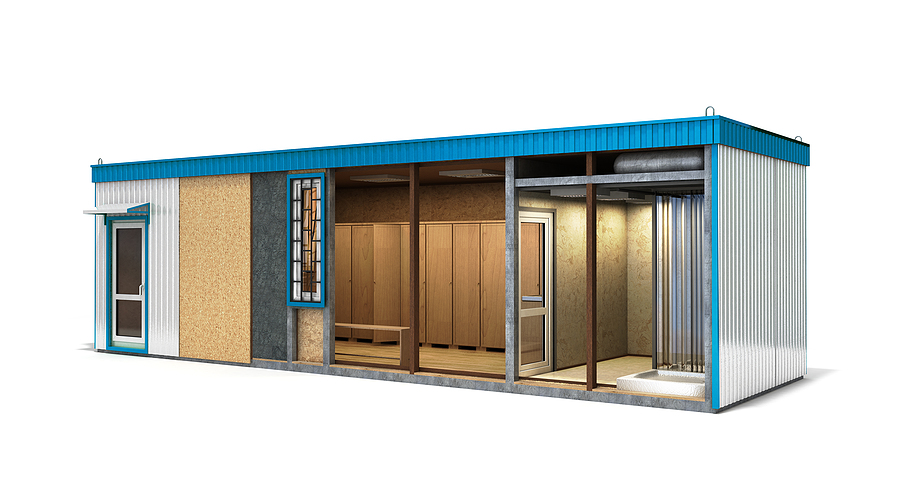
How Much Do Classroom Trailers Cost?
The rapid expansion of school districts and unexpected surges in student populations often challenge educational institutions to quickly adapt to space constraints. One solution that has gained traction over the past decades is the use of classroom trailers or portable classrooms. These units provide an immediate answer to space shortages, allowing for flexibility and adaptability. But just how much do these structures cost? In this article, we’ll delve into the various factors that influence the cost of classroom trailers.

1. Basic Cost Considerations:
At their core, classroom trailers are prefabricated structures, made to be moved as needed. The most basic models, without any additional features or customization, typically start in the range of $19,000 to $50,000. Factors affecting this price include size, material quality, brand, and place of purchase include:
2. Classroom Trailer Size:
The most obvious factor influencing the cost is size. Classroom trailers can range from small, single-classroom units to larger multi-classroom structures. A single classroom trailer, suitable for 20-30 students, can cost between $20,000 to $40,000, while larger double-wide units or those built to accommodate more students can easily surpass this range. Here are the common classroom trailer sizes of occupanciy rates:
Portable classroom trailers come in a variety of sizes to cater to different needs. Here are the four most common sizes are:
- Single Classroom Unit (24′ x 40′): This is the most standard size for a single portable classroom, providing approximately 960 square feet of space. It can typically accommodate 20-30 students, depending on the setup and furnishing.
- Double Classroom Unit (24′ x 60′): Offering around 1,440 square feet, this size can comfortably house two classrooms or one larger space for special purposes like a computer lab or a library.
- Triple Classroom Unit (36′ x 60′): This size spans around 2,160 square feet and can be divided into three separate classrooms or used as larger spaces for specific educational needs.
- Quad Classroom Unit (48′ x 60′): Being the largest of the common sizes, it offers approximately 2,880 square feet of space. It’s designed for four classrooms, but, like other units, its layout can be adjusted based on specific requirements.
These sizes are general benchmarks, and actual dimensions can vary based on the manufacturer and specific customization requests. Additionally, the internal layout and the inclusion of restrooms, storage, or office spaces can affect the usable classroom space within these dimensions.
3. Customization and Features:
A basic trailer might serve the purpose of accommodating students, but educational institutions often need additional features for a conducive learning environment. This might include:
- Air conditioning and heating systems: Essential for maintaining a comfortable environment.
- Restroom facilities: Some trailers come equipped with built-in restrooms, which increases the cost.
- Technology and infrastructure upgrades: Integration of smartboards, projectors, or computer stations.
- Furniture and interior design: Desks, chairs, and other necessary furniture pieces will add to the initial expense.
Each of these additions can influence the overall cost, often adding several thousand dollars to the basic price tag.

4. Installation and Site Preparation:
While classroom trailers are designed for mobility, they require a level surface and proper connection to utilities. Site preparation can include leveling, laying down a foundation or base, and connecting to water, sewage, and electrical lines. Depending on the complexity and location, this can add anywhere from $7,000 to $15,000 or more to the project cost.
5. Maintenance and Longevity:
It’s essential to factor in long-term costs as a well-maintained classroom trailer can last anywhere from 20 to 30 years, but periodic expenses for upkeep will arise.
Portable classroom trailers, while convenient and flexible, do require regular maintenance to ensure a safe and conducive learning environment. Here are the most common types of maintenance tasks associated with these structures:
- HVAC System Maintenance:
- Portable classrooms are often equipped with heating, ventilation, and air conditioning (HVAC) systems to maintain comfortable temperatures throughout the year. Regularly checking, cleaning, and servicing HVAC systems are essential to ensure they run efficiently and last longer.
- Filters should be changed regularly, and the system should be inspected for any leaks or malfunctions.
- Roof Inspections and Repairs:
- Given that these structures are exposed to the elements, roof maintenance is crucial to prevent leaks and structural damage.
- Over time, even minor leaks can lead to significant water damage, mold growth, and other related problems. It’s important to inspect the roof regularly and address any issues promptly.
- Flooring Maintenance:
- The floors in portable classrooms experience regular wear and tear due to foot traffic. It’s essential to check for any damages, loose tiles, or worn-out carpeting and take corrective action as needed.
- Regular cleaning and, if necessary, replacement of sections of the floor can help maintain a clean and safe environment.
- Structural Integrity Checks:
- Over time, portable classrooms can develop structural issues, especially if they’ve been relocated multiple times.
- Regularly inspecting the trailer for signs of wear, rust, or other structural problems can help prevent more significant issues down the line.
- Plumbing and Restroom Maintenance:
- If the portable classroom is equipped with restrooms, regular plumbing checks are necessary.
- This includes ensuring that the toilets, sinks, and other fixtures are in good working order, checking for leaks, and addressing any clogs or drainage issues.
- Window and Door Maintenance:
- Windows and doors must seal properly to maintain energy efficiency and security. Regularly checking the seals, locks, and overall condition of windows and doors is vital.
- Broken or cracked windows should be replaced promptly, and door hinges and locks should be regularly inspected and lubricated.
- Electrical System Checks:
- Given the importance of lighting, technology, and other electrical needs in a classroom setting, it’s essential to regularly inspect the electrical systems.
- This includes checking outlets, switches, lighting fixtures, and ensuring all wiring is in good condition.
- Exterior Maintenance:
- The outer appearance and structural integrity of the trailer are vital. This involves checking for any damages to the siding, ensuring proper water drainage around the unit, and occasionally painting or sealing the exterior to protect against the elements.
Regular maintenance not only ensures that the portable classroom remains a safe and productive environment for students but also extends the lifespan of the unit, making it a more cost-effective solution in the long run.
6. Renting vs. Buying:
For schools that see their space needs as temporary, renting might be a viable option. Renting costs can range from $250 to $1,000 per month based on the size and features of the unit. While this might seem more manageable in the short term, long-term rentals might end up costing more than an outright purchase, especially if the need extends beyond a couple of years. Here are the advantages and disadvantages of buying clashing trailers versus renting them:
Renting Portable Classroom Trailers:
Advantages:
- Flexibility: Renting allows for short-term solutions without long-term commitments, making it ideal for temporary space needs.
- Lower Initial Costs: There’s no need for a large upfront investment as with purchasing.
- Maintenance: Rental agreements might include maintenance and repair services, reducing the school’s responsibility for upkeep.
- Quick Solution: Renting can be a faster way to address immediate space needs.
Disadvantages:
- Cost Over Time: Renting for an extended period may end up being more costly than purchasing.
- Limited Customization: Rental units might not offer the same level of customization or specific features that a purchased unit might.
- No Equity: Money spent on renting doesn’t contribute to ownership or asset acquisition.
Buying Portable Classroom Trailers:
Advantages:
- Equity: Once purchased, the trailer is an asset for the institution, which might appreciate in value or be sold if no longer needed.
- Customization: Buying allows for specific modifications and features tailored to the school’s needs.
- Long-Term Solution: Suitable for institutions expecting a prolonged need for additional space.
- Possible Cost Savings: Over an extended period, owning can be more cost-effective than continual rental.
Disadvantages:
- Higher Initial Investment: Purchasing requires a more significant upfront cost.
- Maintenance Responsibility: The onus of maintenance, repairs, and upgrades falls on the owner.
- Less Flexibility: If the need for space decreases, the institution might have an unneeded asset on its hands.
- Depreciation: Like all structures, classroom trailers might depreciate over time, potentially leading to a lower resale value.
The decision between renting and buying should be based on the specific needs, financial situation, and long-term plans of the educational institution.
7. Location and Market Dynamics:
Like any market, the cost of classroom trailers can fluctuate based on demand, location, and availability. Areas experiencing sudden population growth or those recovering from natural disasters might see a spike in demand, pushing prices higher. Additionally, transportation costs for delivering the trailer to its intended location can vary based on distance and logistics.

Classroom trailers provide a flexible and immediate solution to space challenges faced by many educational institutions. While their cost can vary significantly based on numerous factors, a general ballpark figure for a basic unit ranges from $15,000 to $45,000. However, when factoring in customization, site preparation, and long-term maintenance, schools should budget for additional expenses. By assessing current and future needs, educational leaders can determine whether renting or buying is the best course of action and make an informed decision that ensures a conducive learning environment for their students.
